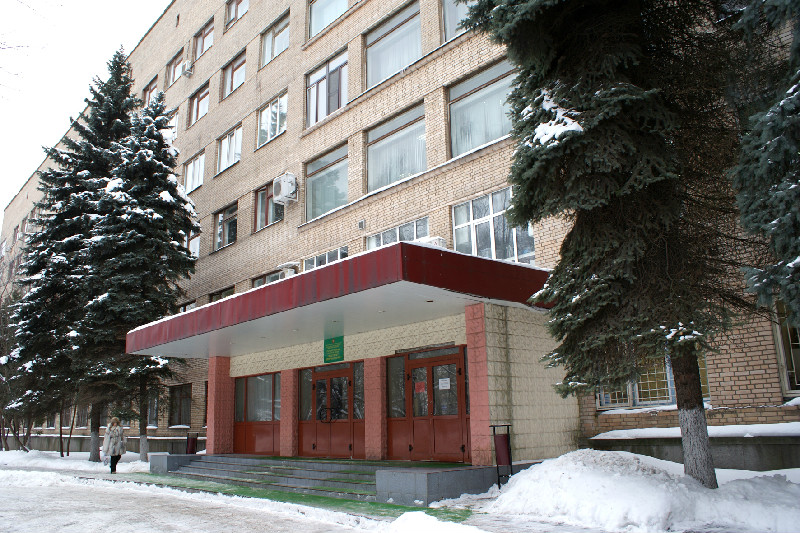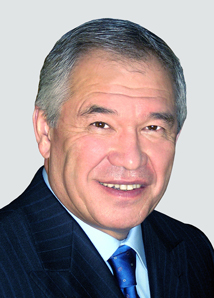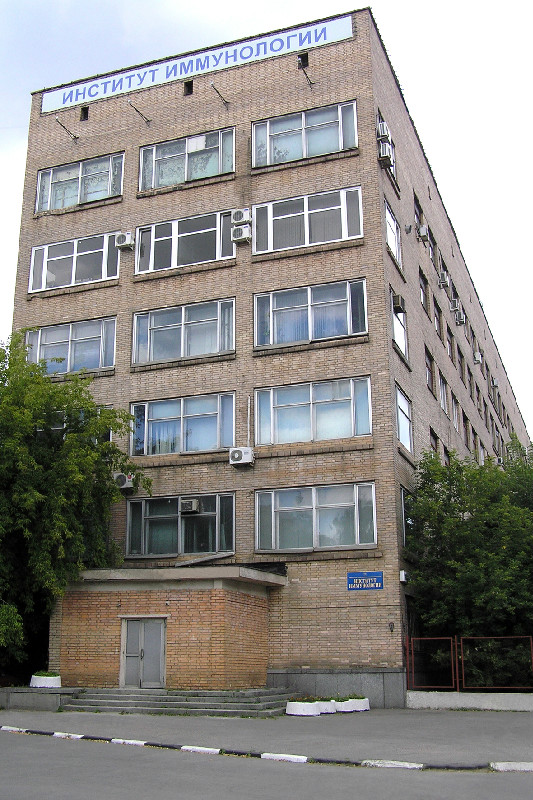
Institute of Immunology, Moscow
Local Publications
The following publications used ISAAC data from the Moscow centre:
- Khaitov RM, Luss LV, Aripova TU, Lysikova IV, Ilyina NI. Prevalence of bronchial asthma, allergic rhinitis and allergodermatitis symptoms in children by ISAAC criteria. Allergy, asthma and clinical immunology 1998; 9: 58-69.
- Lysikova IV. Prevalence of allergic diseases in children: multicentre investigation results in the framework of International Study of Asthma and Allergies in Childhood (ISAAC).[Russian] Medical sci candidate's thesis on speciality 14.00.36 (Allergology and immunology), Moscow, 1999.
- Luss LV, Aripova TU, Ilyina NI, Lysikova IV. Prevalence of bronchial asthma symptoms (ISAAC programme result).[Russian] Asthma 2000; 1(1): 52–59
Moscow Centre
| Phase One | Phase Two | Phase Three | |||
| Centre: | Moscow, Russia ( Northern and Eastern Europe ) | ||||
| Principal Investigator: | Professor Rakhim M Khaitov, Director of the Institute of Immunology | ||||
| Age Groups: | 13-14 | Timeframe: | |||
| Sampling Frame: | 21 schools in the following geographical regions of Moscow (including 2 satellites): Center — 2; South - 5; North-West — 6; North — 1; South-East — 3; South-West — 3; East – 1. | ||||
Personnel
Personnel
V.N. Androsov
Institute of Immunology
National Research Center
24-2 Kashirskoye Shosse
Moscow
Russia
Roles:
- Phase One collaborator for Moscow
K.R. Bokelovadze
Institute of Immunology
National Research Center
24-2 Kashirskoye Shosse
Moscow
Russia
Roles:
- Phase One collaborator for Moscow
I.V. Danilycheva
Institute of Immunology
National Research Center
24-2 Kashirskoye Shosse
Moscow
Russia
Roles:
- Phase One collaborator for Moscow
S.M. Erokhina
Institute of Immunology
National Research Center
24-2 Kashirskoye Shosse
Moscow
Russia
Roles:
- Phase One collaborator for Moscow
Professor Rakhim M Khaitov

Director, Institute of Immunology
National Research Center
24-2 Kashirskoye Shosse
Moscow
Russia
Roles:
- National Coordinator for Russia
- Phase One Principal Investigator for Moscow
L.V. Luss
Institute of Immunology
National Research Center
24-2 Kashirskoye Shosse
Moscow
Russia
Roles:
- Phase One collaborator for Moscow
?.B. Smorodina
Institute of Immunology
National Research Center
24-2 Kashirskoye Shosse
Moscow
Russia
Roles:
- Phase One collaborator for Moscow
Dr Olga Zaikina

Institute of Immunology
National Research Center
24-2 Kashirskoye Shosse
Moscow
Russia
Roles:
- Phase One collaborator for Moscow
- Coordinator and leading Scientific Researcher
Why was this centre selected for ISAAC?
The Institute of Immunology, Moscow, has been founded in 1979 and since then up today deals with asthma and allergies, including those in children. The ISAAC methodology immediately interested Russian physicians, pediatricians, allergologists, asthmologists and immunologists. Due to ISAAC Programme, having been developed in the early 1990s to carry out an international epidemiological research on asthma, rhinitis and eczema according to the standardized methodology, we got an opportunity to compare our data with the data obtained in the other countries.
Moscow, the megalopolis with 10 mln population (today, in 2011, already 11.5 mln), was (and still is) an unfavourable area: a lot of transport and various enterprises, traffic exhaust and industrial smog explain the asthma and allergy increase, especially in children. The majority of previous generations of schoolchildren hadn't even know the words «asthma» and «allergy» and others had known it as a disease of their grandparents; but in the early 1990s Russian children were quite aware about asthma and allergy.
Report on Moscow Study on ISAAC Phase 1 (1993/1994)
First we translated the ISAAC questionnaire into Russian. Then a back translation was done, because it was very important to give an exact Russian version. We also compared our Russian version with Baltic Russian version which had been made to investigate Narva town (Estonia) and Riga city (Latvia), the places with predominantly Russian population. There were no significant differences in the Estonian translation from English into Russian in comparison to our version.
Six experienced allergologists from the Institute of Immunology visited schools, distributed the written questionnaires, showed video questionnaire to schoolchildren, explained how to fill forms and collected the filled questionnaires during October, 1993 — the beginning of April, 1994 (out of pollen season). Besides collecting schoolchildren's questionnaires the workers contacted with the teachers and parents of children who had health troubles.
Approximately about 4,000 ISAAC questionnaires (Russian version) were distributed among Moscow schoolchildren of 13–14 years old schoolchildren from randomly chosen 21 schools (including video questionnaire) to be filled. The schools had been chosen in the different geographical regions of Moscow: Center — 2; South — 5; North-West — 6; North — 1; South-East — 3; South-West —3; East — 1. By the end of March 3411 questionnaires were filled, collected and checked.
The ISAAC study of asthma and allergy in Moscow have showed that a lot of 13–14 year schoolchildren suffer from the breathing problems that interfere with their everyday life. More than 100 children had wheezing/whistling breathing or dry cough (not associated with a cold or lung infection): they had it during or after physical exercise or being woken at night. Tens of children even had severe attacks of wheezing/whistling breathing which limited their speech. More than 30 children already had the diagnosed asthma. In about hundred of cases the so-calledmild asthma or preasthma was diagnosed. Some children had sneezing or blocked nose not associated with cold or flu and other nose and eye problems (itching and watering) simultaneously. These problems usually occur in the certain months (pollen season) and are associated with allergy against some pollen. Several children had hay fever. Many children had itchy rash and other skin troubles connected not only with allergy, but also with psoriasis or gastrointestinal troubles. Very few suffered from atopic eczema. Many cases of allergy manifestation were associated with allergy against mites (home dust) and epidermal allergens (pets: cats and dogs). During interviewing the children were also asked them about the medicines they used. The list of used pharmaceuticals was: Becotide, Berotec, Ditec, Ifiral, Intal, Salbutamol, Ventolin, Zaditen, Beconase, Lomusol.
References (all in Russian)
- Khaitov R.M., Luss L.V., Aripova T.U., Lysikova I.V., Ilyina N.I. Prevalence of bronchial asthma, allergic rhinitis and allergodermatitis symptoms in children by ISAAC criteria. // Allergy, asthma and clinical immunology. 1998, No 9, p. 58–69 (Rus).
- Lysikova I.V. Prevalence of allergic diseases in children: multicentre investigation results in the framework of International Study of Asthma and Allergies in Childhood (ISAAC). Medical sci candidate's thesis on speciality 14.00.36 (Allergology and immunology), Moscow, 1999, (Rus).
- Luss L.V., Aripova T.U., Ilyina N.I., Lysikova I.V. Prevalence of bronchial asthma symptoms (ISAAC programme result) // Asthma. 2000, v. 1, No 1, p. 52–59 (Rus).
Acknowledgements
We gratefully acknowledge the financial support from Glaxo pharmaceutical company (since 1995 GlaxoWellcome, since 2001 GlaxoSmithKline). We thank the school teachers and children, who participated in the surveys. We also thank the physicians and scientific researchers from the Institute of Immunology, Moscow, who took part in discussing the results.

